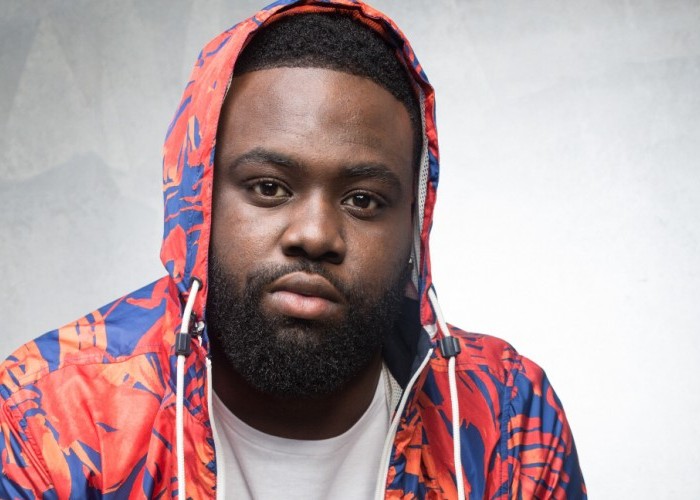Apr 2, 2024 12:59 PM
Saxophonist, Sonic Explorer Casey Benjamin Dies at 45
Casey Benjamin, the alto saxophonist, vocalist, keyboardist and producer who stamped his distinctive sounds on the…

Pianist James Francies has released his Blue Note debut, Flight.
(Photo: Jati Lindsay)In 2015, when pianist James Francies signed with Blue Note, he was a 20-year-old sophomore at The New School for Jazz and Contemporary Music with an elite resume. He had improvised at the highest levels with drummer Jeff “Tain” Watts and vibraphonist Stefon Harris, plugged in with drummer Chris Dave, served as a sub with The Roots on Late Night With Jimmy Fallon and appeared on the soundtrack to the 2015 Netflix documentary What Happened, Miss Simone?
But the Houston native remained in school, earning his BFA and bolstering his reputation. He played on Chance The Rapper’s 2016 hit “No Problem,” and has performed with a diverse array of artists, including Common, Nas, Lauryn Hill, José James, Pat Metheny, Chris Potter and Eric Harland.
Francies accesses all these experiences on his Blue Note debut, Flight, with bassist Burniss Travis II and drummer Jeremy Dutton, from his group, Kinetic, several vocalists and guest instrumentalists Potter, vibraphonist Joel Ross and guitarist Mike Moreno.
“The record goes a bunch of places, but a spine threads through it,” Francies said. “Instead of playing a bunch of notes and songs everyone knows, I wanted to show my different layers.”
The album showcases what pianist Aaron Parks describes as Francies’ “undeniable technical virtuosity,” marked by “remarkable independence between his hands that lets him keep two very distinct, coherent ideas—sometimes it feels like three—going on all at once.”
Consider “Reciprocal,” on which all members soar cogently through the 21/8 form; or “Crib,” on which Francies and Potter converse at length over gnarly changes; or his efflorescent opening solo on “Sway,” a beautiful line that Francies wrote in high school.
But for the most part, Francies reserves pyrotechnics for the numerous concerts he expects to do with Kinetic next year. He takes his time, develops motifs, focuses on storytelling. On “Dark Purple,” a spacey, swirly, rubato ballad, Francies—whose synesthetic visions direct his creative flow—enters “a Zen place as different colors pass by.” He generates richly orchestrated layers of harmony and colors to surround Chris Turner’s incantatory lyric on the kaleidoscopic “Dreaming” and to frame his lyric solo on the opening section of “A Lover And A Fighter,” whose final section upholds the band’s sobriquet.
“It’s like a wave, constant motion that we add to and remove things from,” Francies said of his attitude toward rhythm. “It feels like flying—we’re somewhere else for that hour we perform. It’s defying fear, finding a higher place, believing and trusting in yourself. When birds fly, they trust their wings and the air around them. If you think about it too much, it probably won’t happen.”
“Pointing out a single song doesn’t do James justice,” said Derrick Hodge, who produced the album. “There aren’t many James Francies-isms. What makes him unique is the album’s flow, the contrast from song to song, his willingness to throw himself into different situations—to be in the moment and put what’s honestly him on the line when the lights are on, with the confidence he’ll land on his feet. He doesn’t worry about being judged.”
Francies evolved this aesthetic ethos coming up in what he described as an “iffy” section of Houston. “I was probably the only person in my neighborhood going to a magnet school,” he said, referring to the exemplary High School for the Performing and Visual Arts.
He played sermons at his parents’ church and, from age 14 through 17, led a gigging jazz trio modeled on Oscar Peterson, an early hero. His real-world experiences “reinforced that this isn’t a joke,” he said. “People who are supporting families are sacrificing to hear you play. Some people waited all week to hear you, or didn’t eat that day because they wanted to go to a concert.
“For me, music is music. Always play from your heart, with empathy and authenticity. It doesn’t matter where you are—I’d play the same in front of you for an hour as I would with The Roots in front of thousands of people. There’s a saying, ‘If you’re always ready, then you never have to be ready.’” DB

Benjamin possessed a fluid, round sound on the alto saxophone, and he was often most recognizable by the layers of electronic effects that he put onto the instrument.
Apr 2, 2024 12:59 PM
Casey Benjamin, the alto saxophonist, vocalist, keyboardist and producer who stamped his distinctive sounds on the…

“He’s constructing intelligent musical sentences that connect seamlessly, which is the most important part of linear playing,” Charles McPherson said of alto saxophonist Sonny Red.
Feb 27, 2024 1:40 PM
“I might not have felt this way 30 to 40 years ago, but I’ve reached a point where I can hear value in what people…

Albert “Tootie” Heath (1935–2024) followed in the tradition of drummer Kenny Clarke, his idol.
Apr 5, 2024 10:28 AM
Albert “Tootie” Heath, a drummer of impeccable taste and time who was the youngest of three jazz-legend brothers…

“Both of us are quite grounded in the craft, the tradition and the harmonic sense,” Rosenwinkel said of his experience playing with Allen. “Yet I felt we shared something mystical as well.”
Mar 12, 2024 11:42 AM
“There are a few musicians you hear where, as somebody once said, the molecules in the room change. Geri was one of…

Henry Threadgill performs with Zooid at Big Ears in Knoxville, Tennessee.
Apr 9, 2024 11:30 AM
Big Ears, the annual four-day music celebration that first took place in 2009 in Knoxville, Tennessee, could well be…